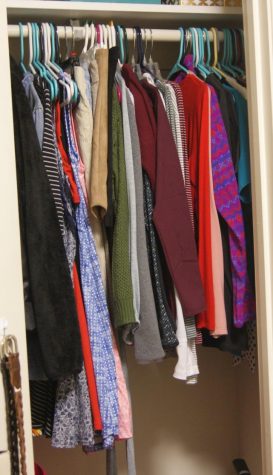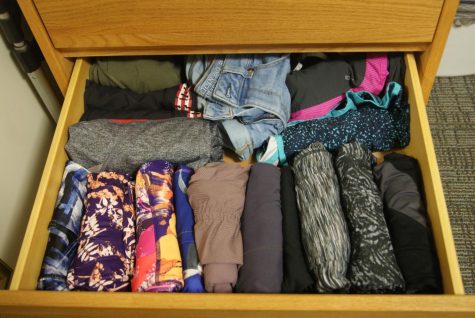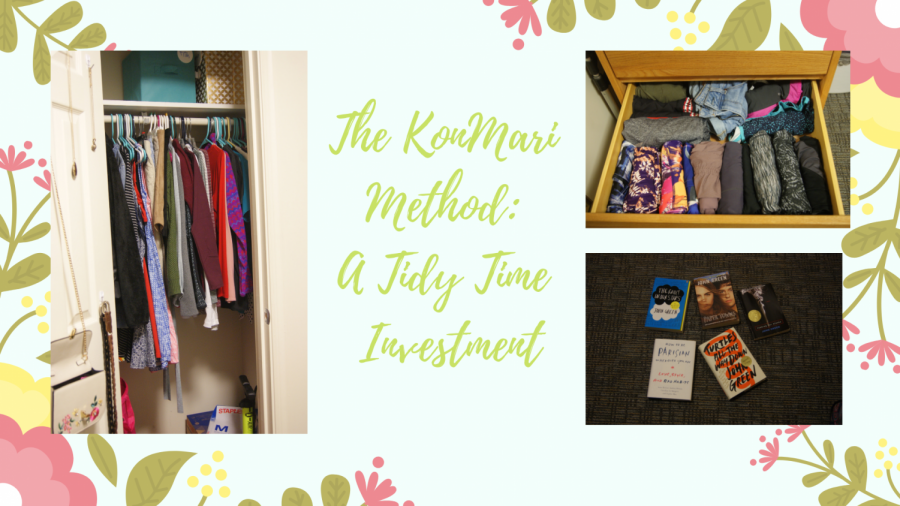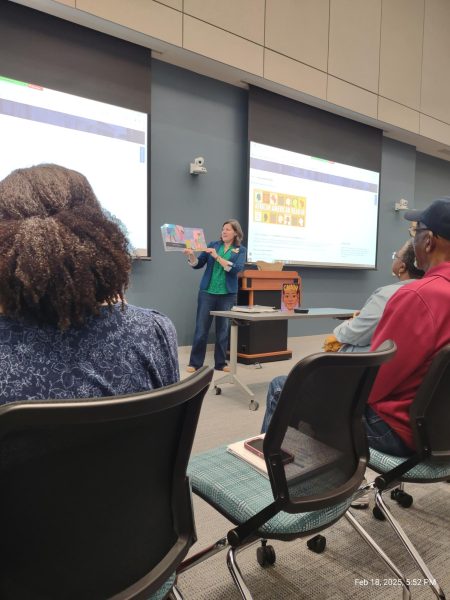The KonMari Method: a tidy time investment
Before reading:
Through the magic of Netflix, I recently unearthed the KonMari Method. The KonMari Method of tidying was created by the host of the show “Tidying Up with Marie Kondo.” Kondo is a woman who has specialized in the art of tidying. Due to her large success in Japan, America, and many other countries where the show is streamed, the method was named after her.
I watched an episode of “Tidying Up with Marie Kondo” and became interested in this seemingly impossible idea of never reverting to accumulating junk in your home after adopting her practices. Families with cluttered homes set up meetings with Kondo, and she works through their entire house discarding old items that do not spark joy for the inhabitants. She will often help them sort through emotional clutter as well, making the show more relatable to broader audiences.
As a student, it is essential for me to know where important documents and other items are, so I can be as efficient as possible and skip the pre-test panic cleaning that I normally take part in. I wanted to learn more about the method because, to be completely honest with the readers of this article, I am a horribly messy human being. I do not usually believe that I am very emotionally attached to the clutter, and I do not really understand how things can “spark joy,” but I do believe I will find it to be to difficult to tackle all at once. I am, however, willing to try.
Therefore, I will be following along with Kondo’s practices by reading her book “The Life-Changing Magic of Tidying Up” and giving you my opinions below. Because I live in an apartment and did not want to irritate my roommate, I only tidied in my room and designated areas. I still followed the five steps in each space I tackled, which included, clothes, books, papers, miscellaneous items, and sentimental items.
After reading and Post-cleaning:
The idea of the KonMari Method is to assume you know nothing about tidying and start over from the beginning. According to her book, Kondo is trying to re-train people, who generally start with bad habits. She points out that we learn from a very young age how to clean, but not how to “tidy.”
One thing that I mentioned before reading was that I like to “panic clean” the night before a test. This is actually covered in this book. She states that cleaning is not the same thing as keeping things tidy. Generally, she believes if you panic clean it is because you are projecting your fears into your home.
The main point of this book is not to throw away all of your goods that you have accumulated or even to have everything rearranged, it is just to be extremely truthful with yourself and evaluate where and who you are in your current position. Also, she presents the idea that everything that is necessary already has a designated space in the home or should have one. It is pretty emotionally complex for a self-help guide to keeping your home in order.

There are many ideas that are presented in this book that I liked. Her beliefs about appreciation of material goods are very profound to me. She suggests that you go through every group listed above and thank the items that are being discarded from those groups for what they have given you. She also recommends thanking the items you keep for sparking joy in your life. I really enjoyed doing this.
Something that I learned through this process is that appreciation can seem awkward in American culture, and I am not sure why. Appreciation of what we have been given or what we have worked for is important for us to be happy with ourselves. According to Kondo, it makes us want to treat our possessions with more dignity. This way they will last longer, and we will be happier with them because we chose them out of joy.
I liked that this book connects Japanese and American readers through Kondo’s experiences. It is interesting to learn about another culture through her eyes. I did not have any widespread knowledge on Japanese culture before reading this book, and it was interesting to learn about living spaces, spiritual practices, pop culture, and other things that Kondo has experienced while growing up and living in Japan.
Although I loved her ideas on tidying overall, I did have some problems with the set-up of this book and how she presents those ideas to the reader.
I think it is important for college students to also think about how they can get the most out of their goods, which I did not feel was fully covered in the book. At the end of the process, I had accumulated two trash bags full of garbage and two full of clothes that I needed to sell or give away. Selling their old and gently used clothes to different consignment shops is a good idea, and giving materials to people and organizations who need them are also very important as well. Some more ideas could include selling them on Facebook or Instagram. College students should not try to throw everything away after the process is complete because it is not financially sound in my opinion.
Also, in a practical sense for college students, I found that at UNC Wilmington we have limited places to fold things upright. As you can see in the drawers, I had to roll things instead of folding them upright because everything does not fit in the more shallow drawers. Although, this method also worked, and I still got to fold my socks, it does not fully follow the KonMari Method. I wished I had more opportunities to truly experience her folding techniques.

Overall, I enjoyed following this, and I do believe it has changed the way I will hold onto items. I will forever wonder if something is bringing me joy if it takes up space in my home. I recommend this book to anyone who wants an eye opening experience and is willing to be open-minded.












